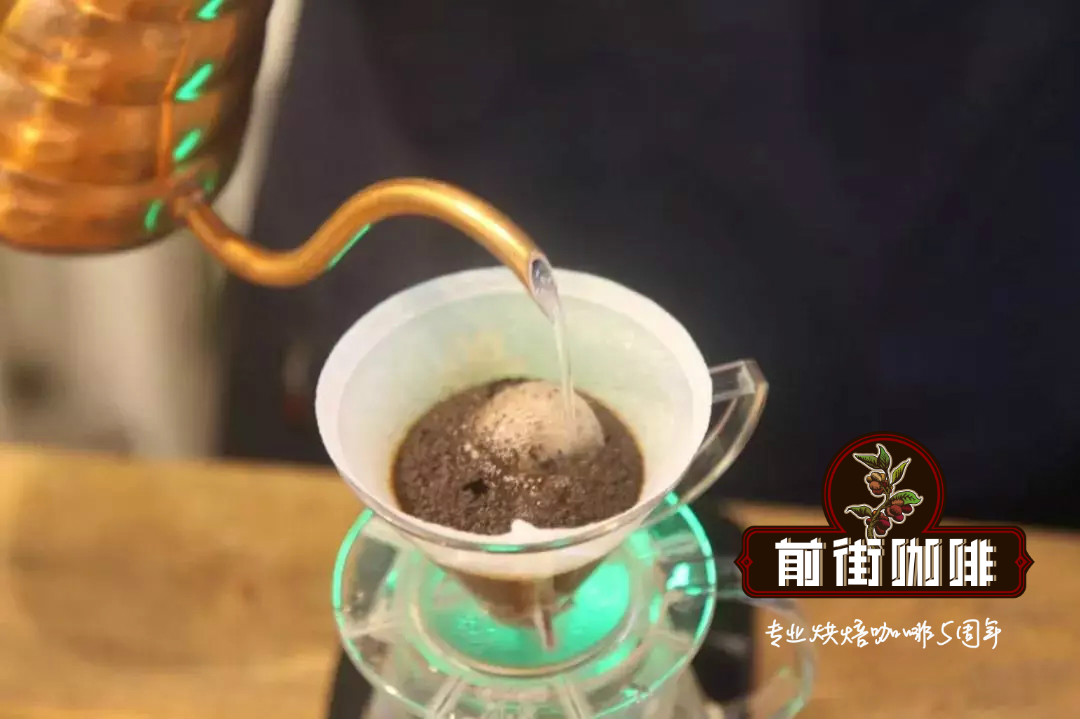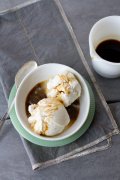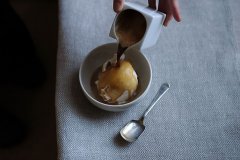Description of hand-cooked flavor of individual coffee beans in Santa Barara, Honduras

Professional coffee knowledge exchange more coffee bean information please follow the coffee workshop (Wechat official account cafe_style)
Introduction:
Coffee began to be grown in Honduras in 1804, and now there are 280000 hectares of coffee plantations, all of which are small coffee farmers, who account for 60% of Hongguo's coffee production. Honduras overtook Guatemala in coffee production in 2011 and became the second largest exporter of washed Arabica beans in the world in 2012, after Brazil. It now ranks seventh in global production. 92% of coffee farmers in Honduras are small individuals, and their coffee-related workers account for 12.5% of the total population of 8 million, so coffee is a very important crop in Honduras. In the coffee garden, coffee farmers harvest red fruits, wash and ferment them and grade them according to the needs of the market to meet the different tastes of consumers. Honduras collects 3 million bags of coffee every year, supplies good quality coffee and unique coffee flavor, and has become the largest producer in Central America and the top ten coffee exporters in the world. The coffee industry in Honduras, which involves the livelihood of hundreds of thousands of families and provides 1 million jobs, is an important economic agriculture in Honduras.
The relatively large producing areas of Honduras, spread all over the western and southern producing areas, have six major producing areas such as Copan, Opalaca, Montecillos, Comayagua, Agalta and El Paraico, with an average planting height of 1300 to 1500 meters above sea level. Coffee varieties are 100 per cent Arabica, 69 per cent are HG, 12 per cent are SHG and 19 per cent are CS. The main varieties of coffee are Typica, Bourbon, Caturra, Villa Sarchi and Lempira. Honduran coffee has always been of high quality, and its price is the most competitive in Central American countries. Small, round, light blue-green coffee, mild sour, full and slightly sweet, suitable for comprehensive coffee or single coffee, suitable for medium to deep roasting, mainly exported to the United States, Germany and Japan.

Honduras is already the largest coffee producer in Central America, and its production has been increasing in recent years. In 2012, due to high international coffee prices, coffee production exceeded 5 million bags in 2010, resulting in a significant increase in production, quality and continuous improvement. The largest coffee province in Honduras is the The Santa Barbara region, located in western Honduras, in the northwest of Lake Yojoa, which has developed into a famous coffee producing area in Honduras in the past few years. At the same time, the area comes from a famous agronomist Mr. Angel Arturo Paz, who owns a post-processing plant-St. Vincent treatment Plant (San Vicente) in the small town of Pe ñ a Blanca in the northern province of Santa Barbara (Santa Barbara) in the west of Yojoa Lake. He has always been the winner of the COE (Cup of Excellence) Cup in Honduras.
St. Vincent's processing plant buys coffee cherries produced by small coffee farmers in the surrounding towns of El Cielito, Las Flores and El Cedral, each with at least 35 families and one school. Although it is often difficult to separate these small farmers' production batches because of their small quantities, the coffee produced in these regions has always been amazing with high sweetness and fruity.
San Vicente, a family-run processing plant, is well-known locally because it helps farmers upgrade their planting technology and modify production equipment through projects, devotes itself to close ties with producers, and takes coffee cup testing as a strict check for each batch of products. This batch of St. Vincent processing Plant Tropical Rain Forest Certification SHG is that the processing plant buys small coffee farmers in the surrounding area to combine production and marketing, because the average planting area of each small coffee farmer is only 1 murmur2 hectares, and the kilograms of raw beans can not be sold independently, so they can only be sold in a whole batch, which is a bit like the type of production and marketing class of coffee production cooperatives or coffee.
Honduras Honduras
Population: 8250000
Although it is not described by HCAFE as a coffee growing area, many roasters label coffee from the Santa Barbara region of Honduras (Santa Barbara), and several coffee areas cross into Santa Barbara (a country's government ministry). Some would say that it needs its own description, but the more appropriate way seems to be to list the planting areas in accordance with official principles. There are also some excellent Pacas varieties from the Santa Barbara region, which are of good quality and have a unique and fruity flavor, which is definitely worth pursuing.
Santa Barara Manor, Honduras
COPAN
The Copan producing area is located in the city of Copan in western Honduras, of which the most famous is the local Mayan site. The region is adjacent to Guatemala and regions like this remind me to attach importance to the actual origin of coffee rather than to producing countries. In fact, the division of countries is somewhat arbitrary, because it is difficult (unfortunately) for consumers to distinguish between coffee beans from Honduras or from Guatemala. Copan production area is located in the north of the Santa Barbara Coffee area.
Altitude: 1000-1500m
Harvest: November-March
Variety: bourbon, Caturra,Catuai
OPALACA
Opalaca producing areas are located in the southern part of Santa Barbara, as well as Intibuka and Intibuca and Lempira. Named after the Opalaca Mountains that stretch through the area.
Altitude: 1100-1500m
Harvest: November-February
Variety: bourbon, Catuai,Typica
The Lucky Town (La Fortuna, Quimistan)-Santa Barbara, Santa Barbara District, Honduras. The Lucky Manor is diligently planted and run by Oscar Orlando Melgar.
The cup tests the flavor:
Juicy, sour, floral, nutty, apple, milk chocolate, tropical fruit, rich and varied flavor and long finish
Product name: SHG, Saint Vincent processing Plant, Honduras
(Honduras San Vicente Rain Forest SHG)
Producing area: Pena Blanca town, Santa Barbara (Santa Barbara)
Processing plant: St. Vincent treatment plant (Beneficio San Vicente)
Variety: Pacas, Catuai, Bourbon
Grade: SHG
Altitude: 1300 to 1500 m
Certification: fair Trade
Flavor: Brown sugar, almonds, toast, chocolate, balance, sweet tones.
Front Street Coffee Honduran Coffee recommended roasting

Because the flavor of Honduran coffee is mostly chocolate and nut, Qianjie coffee is recommended to be roasted in medium and deep depth to increase the time of caramelization to highlight its chocolate, nut and mellow taste. When brewing, Qianjie coffee is recommended to use a KONO filter cup, moderate grinding, water temperature of about 88 ℃, powder to water ratio of 1:13 to 1:14, extraction time of one minute and 50 seconds.
END
Important Notice :
前街咖啡 FrontStreet Coffee has moved to new addredd:
FrontStreet Coffee Address: 315,Donghua East Road,GuangZhou
Tel:020 38364473
- Prev

San Barra, Honduras Flavor characteristics, producing areas and brewing parameters
Professional barista exchanges Please pay attention to the coffee workshop (Weixin Official Accounts cafe_style) The flavor characteristics, production area and brewing parameters of the single bean in the San Barara region of Honduras. The San Vincent processing plant acquires coffee cherries produced by small coffee farmers in the surrounding towns of El Cielito, Las Flores and El Cedral (each of which has at least 35 families and a school). although
- Next

Variety of single bean, brand recommendation and manor introduction in Santa Barara, Honduras
For the exchange of professional baristas, please follow the coffee workshop (Wechat official account cafe_style) single bean species, brand recommendation and manor introduction in Santa Barara, Honduras, sour and bright, floral, nutty, apple, milk chocolate, tropical fruit, rich and varied flavor, long afterrhyme name: SHG (Honduras San Vicen), Honduras St. Vincent processing plant.
Related
- Does Rose Summer choose Blue, Green or Red? Detailed explanation of Rose Summer Coffee plots and Classification in Panamanian Jade Manor
- What is the difference between the origin, producing area, processing plant, cooperative and manor of coffee beans?
- How fine does the espresso powder fit? how to grind the espresso?
- Sca coffee roasting degree color card coffee roasting degree 8 roasting color values what do you mean?
- The practice of lattes: how to make lattes at home
- Introduction to Indonesian Fine Coffee beans-- Java Coffee producing area of Indonesian Arabica Coffee
- How much will the flavor of light and medium roasted rose summer be expressed? What baking level is rose summer suitable for?
- Introduction to the characteristics of washing, sun-drying or wet-planing coffee commonly used in Mantenin, Indonesia
- Price characteristics of Arabica Coffee Bean Starbucks introduction to Manning Coffee Bean Taste producing area Variety Manor
- What is the authentic Yega flavor? What are the flavor characteristics of the really excellent Yejasuffi coffee beans?

